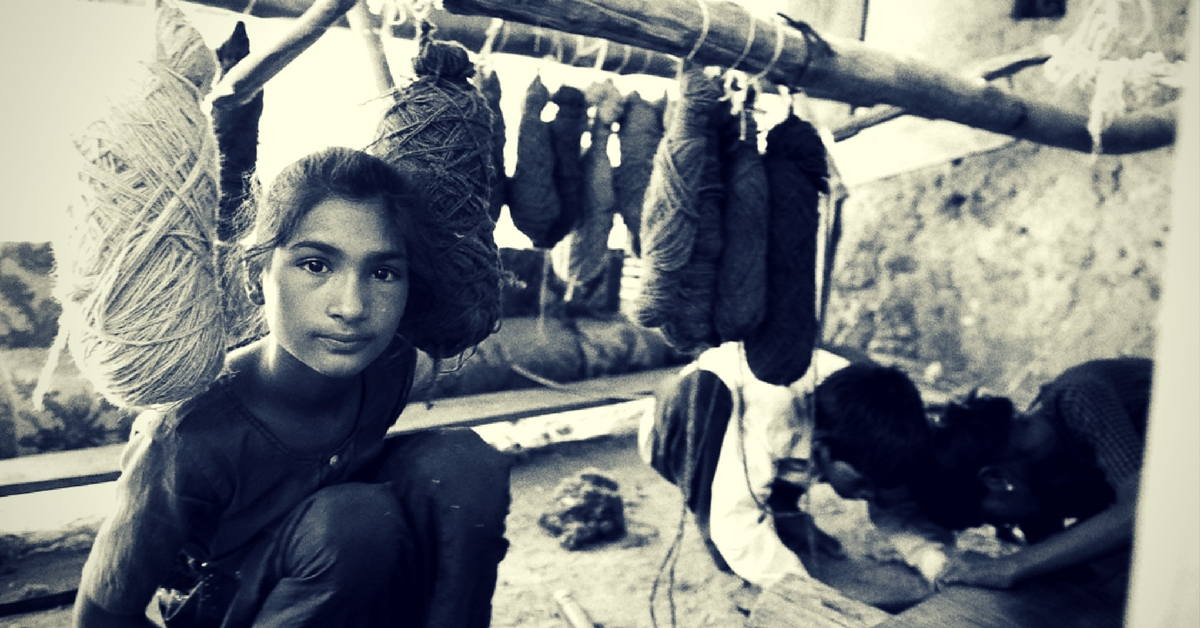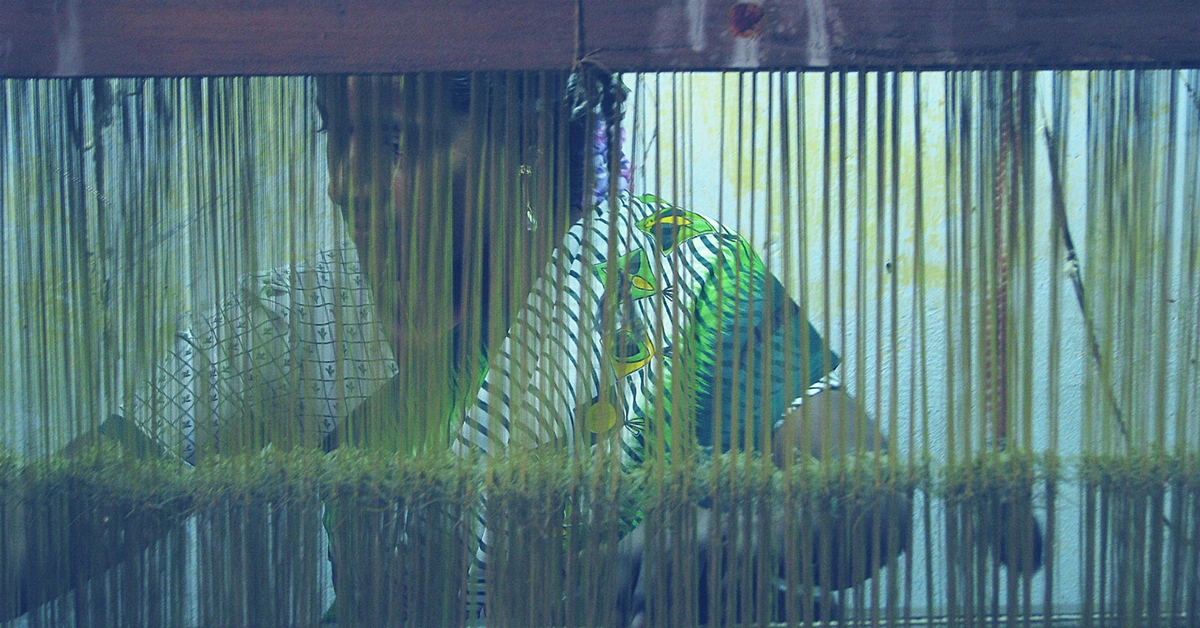Textiles from India formed the majority of products the British traded in, during the colonial era. Thousands of mills churned out hundreds of metres of cloth. With time, trade died down, and support for the artisans disappeared.
Malgaon, a small village in the Kaliaganj Block in North Dinajpur in West Bengal, is 392 km away from the Kolkata, and light years away from the development that the city has seen.
The cottage industries in Bengal, like in other Indian states, work independently, without support. Selling indigenous goods at low prices, they struggle to make a decent living.

In 1978, a resident of Malgaon, Abu Taher, took an interest in carpet weaving after visiting Varanasi that same year. Intrigued by the mechanisms of weaving those beautiful carpets, he memorised them and brought the technical knowledge back to his village.
By 1985-1986, Taher had passed down the vital knowledge to the children of Malgaon. However, there was hardly any market for those carpets in the area. Taher said to India Today, “We used to bring orders and raw materials from Varanasi and take the final products there for sale. This arrangement was leaving us with almost no profit.”
The industry received another setback came when the Child Labour Prohibition and Regulation Act was passed in 1986. Children could no longer be employed in the industry, the work stopped, and the looms fell silent for a while.
In 2009, different self-help groups gained valuable training in the art, and formed the Malgaon Handloom Cluster Development Society. Today, around 300 women, who are members of this society, weave carpets in the village.
The Directorate of Textiles is the nodal agency that oversees the development of the handloom sector in West Bengal. The Directorate is implementing various schemes to render support for development and promotion of this industry.
The exquisite craftsmanship that the weavers’ display is often in the face of extreme adversity. The GST imposed on cotton and yarn hasn’t made their lives easier. There are lakhs of households in Bengal involved in weaving, and in the face of tax revisions, are finding it tough to make a living.
The District Industries Centre is helping these weavers’ by setting up a mega carpet cluster. The facility will have arrangements for training workers, designing and manufacturing carpets and marketing them.
The weavers thus can concentrate exclusively on manufacturing — their core competency. The District Industries Centre makes arrangements to send these carpets to handicraft fairs nationwide, to fetch a modest income for the weavers.
Siddique Hossain, the President of the Handloom Cluster Development Society, hopes the government can take proper care of the industry so that the Malgaon carpets can be marketed in the West.
You may also like:- Toy Story: Resurrection of a Traditional Industry
The weaving community in Malgaon is getting support from the authorities after nearly three decades. As is the case with indigenous industries, the craft requires perfection and preservation from generation to generation. Each weaver will feel gratified, if the product of his/her toiling, fetches a decent sum upon sale.
The mega carpet cluster is an excellent opportunity for these weavers. They spend hours honing their craft, chasing perfection. It is only fair that the government takes their unique art, and presents it to the whole world.
Like this story? Or have something to share? Write to us: contact@thebetterindia.com, or connect with us on Facebook and Twitter.
NEW: Click here to get positive news on WhatsApp!
If you found our stories insightful, informative, or even just enjoyable, we invite you to consider making a voluntary payment to support the work we do at The Better India. Your contribution helps us continue producing quality content that educates, inspires, and drives positive change.
Choose one of the payment options below for your contribution-
By paying for the stories you value, you directly contribute to sustaining our efforts focused on making a difference in the world. Together, let's ensure that impactful stories continue to be told and shared, enriching lives and communities alike.
Thank you for your support. Here are some frequently asked questions you might find helpful to know why you are contributing?

